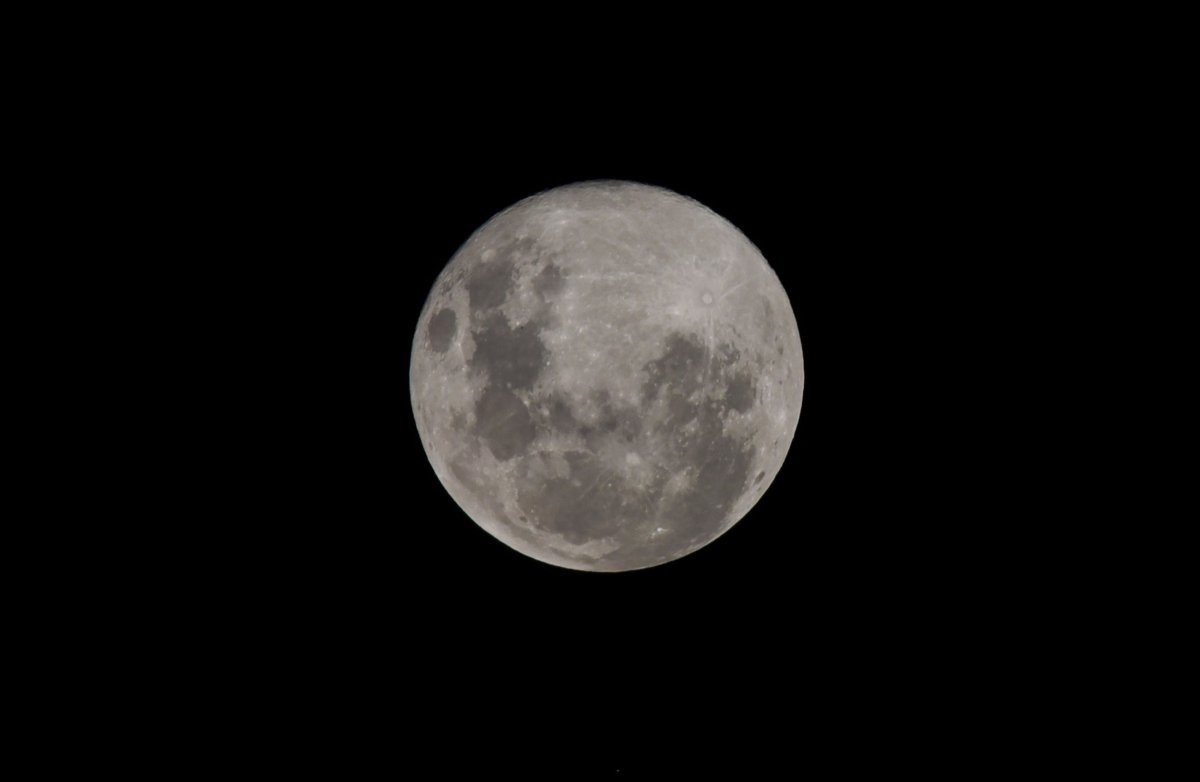Stargazers are in for a treat later this month. On March 20, a supermoon will grace the skies above Earth on the same day that the spring equinox falls.
Supermoon is used to describe a moon that is full and at its closest point to Earth. At these times, it appears slightly brighter and larger than an average full moon, although the size difference is difficult to detect with the untrained eye.
The phenomenon is a result of the fact that the moon's orbit around the Earth is not perfectly circular but elliptical. This means that it may be closer or farther away from our planet depending on where it is in its orbit. A supermoon occurs when a full moon coincides with a point in the year when our natural satellite reaches its perigee, or closest point to the Earth, according to National Geographic.
Astronomers expect that the moon will appear about 14 percent brighter than normal. If that's not enough of a reason to try to catch a glimpse of it, the event will be the third and last supermoon of 2019, with the next one not set to occur until 2020.
The best time to view the phenomenon will be around 9:43 p.m. EST on March 20, when the moon reaches its fullest phase, although it will actually reach its true perigee the day before at 3:47 p.m. EST, when it will be 223,306 miles from Earth.
In the Northern Hemisphere, the full moon in March is traditionally referred to as the "worm moon"—a possible reference to the fact that this time of year is usually accompanied by warmer temperatures, which often herald the appearance of earthworms.
The moon is considered "full" when it is positioned in exact opposition to the sun, or 180 degrees away, with Earth aligned directly between the two bodies.
This alignment technically occurs at only one precise moment every lunar month—the period in which the moon completes a full phase. The term, however, is usually used to refer to the night on the date in which the full moon occurs. In full moon situations, the entire face is illuminated by sunlight, making it appear particularly bright.
The March 20 supermoon this year is extra special because it also coincides with the March equinox, which marks the beginning of spring in the Northern Hemisphere and the beginning of fall in the Southern Hemisphere.
Astronomically speaking, an equinox—of which there are two every year—is when the sun passes directly over the equator. This means that both hemispheres are equally exposed to its light (roughly), and thus the days and nights are about equal in length at northern and southern latitudes.
For the rest of the year, each hemisphere is pointed either toward or away from the sun due to the fact that the Earth's axis is tilted in relation its plane of orbit around the star. This situation gives rise to the summer and winter seasons, respectively.
This year, the moon will be at its fullest just four hours after the arrival of the March equinox, which is set to take place at 5:58 p.m. EST on the 20th. According to the Old Farmer's Almanac, the last time a full moon and spring equinox coincided this closely in time was in 2000. But you have to go back to March 20, 1981, to find the last time that the two events occurred on the same date.

Uncommon Knowledge
Newsweek is committed to challenging conventional wisdom and finding connections in the search for common ground.
Newsweek is committed to challenging conventional wisdom and finding connections in the search for common ground.
About the writer
Aristos is a Newsweek science reporter with the London, U.K., bureau. He reports on science and health topics, including; animal, ... Read more
To read how Newsweek uses AI as a newsroom tool, Click here.








